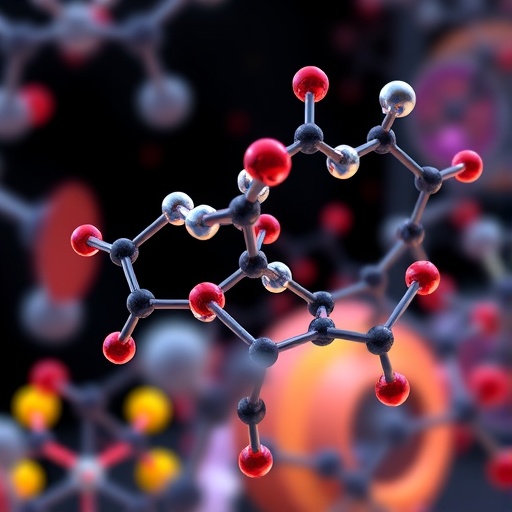The emergence of poly(ADP-ribose) polymerase inhibitors (PARPi) as a transformative therapy for homologous recombination-deficient tumors has significantly altered the landscape of cancer treatment. These drugs exploit synthetic lethality to selectively kill tumor cells harboring defects in DNA repair pathways, particularly BRCA1 and BRCA2 mutations. However, the clinical utility of PARPi is frequently hampered by the development of resistance, posing a formidable challenge for long-term therapeutic success. While extensive research efforts have elucidated the downstream consequences of PARP inhibition, the immediate cellular responses—especially relating to chromatin dynamics and histone regulation—have remained largely obscure. A groundbreaking study by Moser et al. sheds light on this intricate interplay, revealing that PARP inhibition triggers a rapid eviction of histones from chromatin, which creates a novel vulnerability in PARPi-resistant cancer cells.
Histones, the core protein components around which DNA is wrapped, not only provide structural support but also regulate critical processes like transcription, replication, and DNA repair. The balance of histone supply and turnover is a finely tuned mechanism, essential to genome stability. Moser and colleagues observed that upon PARP inhibition, there is a notable release of histones from chromatin, disrupting histone homeostasis. This disturbance appears to be a key mediator of PARPi cytotoxicity, particularly in resistant cancer cells that rely heavily on maintaining DNA replication despite impaired repair capabilities. The eviction of histones compromises the chromatin structure, making cells more prone to replication stress and genomic instability.
The study further identifies the Nuclear Autoantigenic Sperm Protein (NASP) as a pivotal player in managing the consequences of PARP inhibitor-induced histone eviction. NASP is a histone chaperone protein equipped with Tetratricopeptide Repeat (TPR) motifs, which facilitate its interaction with histones and other protein partners. Through comprehensive functional genetic screens, the researchers demonstrated that NASP is essential for preserving the stability of histones displaced from chromatin after PARP inhibition. When NASP is depleted, tumor cells exhibit an enhanced sensitivity to PARPi treatment, both in cell culture and animal models, signifying a promising new target for overcoming PARPi resistance.
.adsslot_jvF2YnRC67{ width:728px !important; height:90px !important; }
@media (max-width:1199px) { .adsslot_jvF2YnRC67{ width:468px !important; height:60px !important; } }
@media (max-width:767px) { .adsslot_jvF2YnRC67{ width:320px !important; height:50px !important; } }
ADVERTISEMENT
One of the most striking findings describes how NASP deficiency impairs DNA replication fork progression, a critical step for genome duplication. The accumulation of evicted histones without proper chaperoning leads to replication-associated DNA damage, compounding the vulnerability of cancer cells subjected to PARP inhibitors. This defect in replication fork dynamics underlines the importance of histone turnover mechanisms in sustaining rapid and continuous DNA synthesis in resistant tumors. Loss of NASP interrupts this delicate balance, tipping cells beyond repair and driving cell death.
Interestingly, NASP’s role is not solitary. It acts in concert with the INO80 chromatin remodeling complex and the chaperone activity inherent to PARP1, the very enzyme inhibited by PARPi drugs. INO80 is known to mediate nucleosome sliding and eviction, processes critical for DNA repair and transcriptional regulation. The collaboration between NASP, INO80, and PARP1 ensures a robust system for histone turnover that mitigates DNA damage accumulation. This tripartite interaction highlights a complex network by which cancer cells modulate chromatin to survive genotoxic stress induced by therapeutic agents.
The discovery that histone eviction represents an immediate and direct consequence of PARP inhibition challenges previous assumptions that primarily considered downstream DNA repair defects as causes of PARPi toxicity. Instead, it positions chromatin dynamics at the forefront of therapeutic action and resistance mechanisms. This paradigm shift invites a reconsideration of strategies to potentiate PARPi efficacy by targeting histone supply pathways, an approach that could circumvent or delay resistance emergence and improve patient outcomes.
From a clinical perspective, the identification of NASP as a vulnerability in PARPi-resistant tumors opens new avenues for combination therapies. Pharmacologic or genetic inhibition of NASP could selectively sensitize resistant cancer cells to PARP inhibitors, enhancing their cytotoxic effects. Importantly, targeting histone chaperones may present fewer off-target toxicities, as normal cells with intact homologous recombination pathways are less reliant on these compensatory mechanisms.
Moreover, the study provides essential insights into replication stress biology, a hallmark of cancer cells with DNA repair defects. By linking disrupted histone turnover to impaired replication fork stability, Moser et al. deepen our understanding of how cancer cells cope with intrinsic and therapy-induced genomic instability. The interdependence of chromatin remodeling factors like INO80, histone chaperones such as NASP, and DNA repair components such as PARP1 portrays a sophisticated network critical for cancer cell survival under therapeutic duress.
This work also prompts the reevaluation of resistance biomarkers for PARPi therapies. Traditionally, mutations restoring homologous recombination or altering drug efflux were the focus. Now, alterations in chromatin modulators and histone chaperones could serve as predictive markers for treatment response or resistance, guiding personalized therapy decisions. The study’s findings encourage the exploration of NASP expression levels or functionality as part of diagnostic panels in clinics.
In the broader context of cancer epigenetics, this research highlights how perturbations in chromatin structure can influence response to targeted therapies. The directly observed effect of PARP inhibitors on histone dynamics underscores the importance of integrating chromatin biology into drug development and resistance research. As epigenetic therapies gain momentum, elucidation of histone homeostasis mechanisms will be vital to designing synergistic treatment combinations.
As the field progresses, further investigations will be necessary to characterize the precise molecular interactions between NASP, INO80, and PARP1 in diverse tumor contexts. Additionally, screening for compounds that effectively disrupt histone chaperoning pathways could accelerate the translation of these insights into clinical application. Ultimately, exploiting cancer cells’ dependency on histone supply mechanisms may transform management paradigms for patients facing PARPi resistance, heralding a new era of precision medicine in oncology.
Subject of Research:
The study investigates the immediate effects of PARP inhibition on chromatin, particularly focusing on histone eviction and the role of the histone chaperone NASP in overcoming PARP inhibitor resistance in cancer cells.
Article Title:
NASP modulates histone turnover to drive PARP inhibitor resistance
Article References:
Moser, S.C., Khalizieva, A., Roehsner, J. et al. NASP modulates histone turnover to drive PARP inhibitor resistance. Nature (2025). https://doi.org/10.1038/s41586-025-09414-z
Image Credits:
AI Generated
Tags: BRCA1 and BRCA2 mutationscancer treatment resistance mechanismschromatin regulation and DNA repairgenome stability and histone homeostasishistone eviction in cancer cellshistone turnover and chromatin dynamicsinnovative strategies for overcoming PARPi resistance.mechanisms of PARP resistancePARP inhibitors in cancer therapyrole of histones in transcription and replicationsynthetic lethality in cancer treatmenttherapeutic challenges in PARP inhibition





